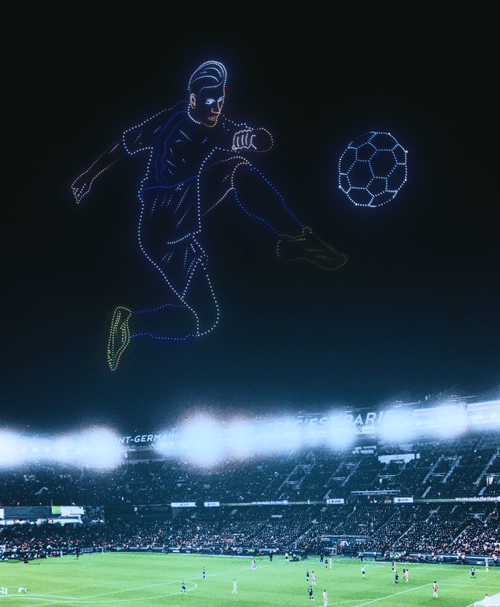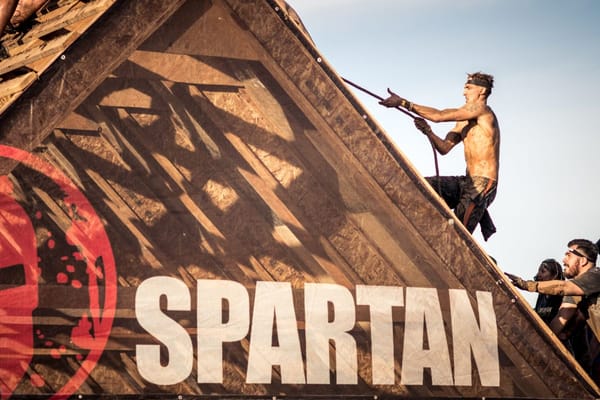Ivan Biriuk, a trailblazer in drone technology, has redefined the possibilities of aerial art and entertainment. As the Founder and CTO of Cyberdrone, Ivan has spearheaded groundbreaking advancements in drone light shows, creating some of the world’s smallest and most efficient drones for mesmerizing performances. With a strong foundation in robotics, electronics, and UAV software, Ivan’s expertise has propelled Cyberdrone to global prominence since its inception in 2020. Based in Dubai, his work combines innovation with artistry, shaping the future of drone applications worldwide. In this interview, Ivan shares his journey, the inspiration behind Cyberdrone, and the vision driving his technological achievements.
Ivan, what was your inspiration behind founding Cyberdrone, and how did your personal experiences shape this journey?
From a young age, I was passionate about model aviation—building rockets and carving airplanes and helicopters out of wood. Over time, that passion grew into an interest in robotics, and the first robot I built was a “hexapod.” I also worked with drones for educational projects and flew homemade FPV drones. I traveled extensively, capturing diverse locations with my drone when regulations were more relaxed. Eventually, this path naturally led me to create outdoor drone shows.



How do you plan shows, and what factors influence decisions like location, themes, and animations? How much influence do clients have over these aspects?
Planning largely depends on the event itself, the host country, client requirements, and the number of drones available. Animation is often guided by the client’s specific requests. Sometimes they come to us with a clear vision of what they want, while other times, we create the entire animation concept from scratch.
How do you quantitatively measure your environmental impact compared to traditional fireworks displays?
Comparing fireworks to drone shows isn’t entirely fair, as they are fundamentally different technologies. However, fireworks generate significant noise, pollute the air, and their sudden bangs can easily frighten animals. Drone shows, on the other hand, are a much quieter and more eco-friendly alternative. While drones aren’t completely silent, their sound is softer, more even, and avoids the abrupt, startling explosions of fireworks. Additionally, the ability to recycle lithium batteries and electronic components supports global sustainability efforts.
Could you walk us through the R&D process for your proprietary technology?
From the start, our goal was to build a full-cycle company—and we’ve made that vision a reality. Our team brings together experts across every field, from development to sales. We’ve designed every element in-house: drone hardware, electronics, software, ground control systems, and tools for animation creation, while also establishing our own production facilities.
Simultaneously, we’re constantly experimenting, pushing technological boundaries, and finding new ways to inspire. That said, we place equal importance on rigorous testing—whether it’s refining proven systems or introducing new features—because stability and safety will always be our top priorities.



What logistical challenges arise with large-scale shows, and how do you address them? Do local regulations impact your planning process?
Our compact drones simplify transportation since they take up very little space and don’t require large, bulky cargo. Yet, logistics can still depend heavily on customs procedures and regulations for drones and batteries in different countries.
Preparing for a show also depends on factors such as the number of drones, the venue size, and the takeoff zone. For larger shows, more time is needed to charge and position the drones, but the process itself doesn’t become more complicated. The launch system stays the same—the only thing that scales up is the size of the team.
Could drone shows exceed the current 20-minute limit, and how far from the launch site can they currently be displayed?
It’s technically possible to extend the duration of a show by using larger drones or alternative batteries (as larger batteries require bigger drones). However, based on our experience, audience attention is best sustained for around 15 minutes.
Show visibility depends on factors such as weather conditions, the venue layout, and the number of drones. On average, a show is visible from 2 to 5 kilometers away.
How do you plan to integrate blockchain with drone software and systems, and what kind of advantages does this bring in terms of operational efficiency?
We’re exploring the integration of our drones with the Ethereum blockchain using smart contracts, which would allow us to automate specific tasks and enhance autonomy. Incorporating NFTs unlocks exciting opportunities, such as creating unique animations and enabling ownership of personalized content.
With variations in show scale and location, how do you determine price quotations? What factors most influence your pricing?
Our pricing system is straightforward and transparent. The cost depends on the number of drones used, logistics and equipment transportation, and whether the show is a one-time event or a recurring performance.
How challenging is it to achieve profitability in this industry?
Achieving profitability in such a competitive market is no easy task. It requires a delicate balance—50% technology and 50% marketing. Companies that manufacture their own drones, like we do, have a significant advantage by reducing costs and accelerating innovation.

How do you see aerial art and drone technology evolving in the coming years in a tech-first region like the UAE?
We anticipate several important trends shaping the future of aerial art and drone technology. These include a growing number of drone shows driven by increasing demand, the simplification of regulatory procedures for obtaining permits, and leveraging the UAE’s strategic position as a logistics hub for drone production and export. Additionally, we foresee the establishment of local drone manufacturing in the UAE in the near future, further solidifying the region’s role as a leader in drone technology.
What has been your most successful project in the MENA region, and what strategies do you have in place to raise the bar for future projects?
Some of our most successful projects include a 2,000-drone show in Dubai Marina and a 1,000-drone display in Dubai for AC Milan. Moving forward, we’re focused on expanding partnerships with companies worldwide, introducing new show formats, such as immersive displays, drone fly-arounds of buildings, and real-time interactive shows—technologies we’ve already developed.
Also Read:



















